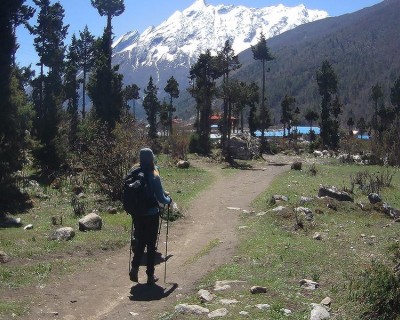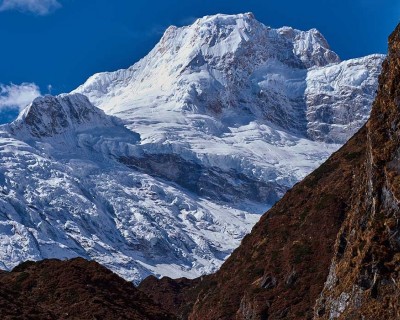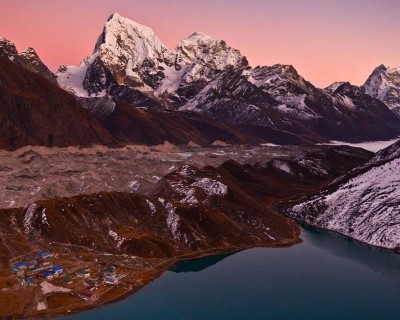A Trek That Takes You Back in Time
The mountain region which is generally popular for its raw and unspoiled natural beauty. However, due to the popularity of the mainstream routes and developments to handle the inflow of explorers from all over the world, modernization has made its way even to the mountains.
However, the far eastern part of the Himalayas, Kanchenjunga, still boasts the intact pristine beauty of the Himalayas. That’s why this off-beaten journey will feel like a journey back in time when every aspect of the majestic Himalayan region was in its raw state.
This is a less commercialized trekking route and the feeling of untouched wilderness is quite extraordinary. The path of Kanchenjunga Trek is wild, and you will often not encounter other trekking groups for days during your exploration.
In comparison to other mainstream explorations this off-beaten route emphasizes the authenticity and untouched beauty of the Himalayan region. The sense of isolation this trek promises provides an opportunity to connect with nature and culture of the region at a deeper level.
.jpg)
Major Highlights of the Kanchenjunga Trek
Scenic Beauty
The eastern region of the country is popular as the core part of the Himalayas. Home to some of the major 8,000-meter peaks in the world, this part of the Himalayan range is renowned for captivating natural beauty.
Kanchenjunga region, which is about 125 km (77 miles) from the mainstream Everest region, doesn’t lag behind when it comes to exhilarating Himalayan beauty. In fact, its remoteness factor further elevates the charms of the majestic Himalayas.
This off-beaten trekking route will reward you with breathtaking views of the four of the highest peaks in the world, Kanchenjunga, Makalu, Everest, and Lhotse, including the vistas of the other aesthetic peaks Kabru, Tent Peak, Mount Janu, Kambachen, and Kokthang.
Cultural Immersion
Trekking adventures in Nepal are popular for their cultural exposure. The teahouse treks in Nepal offer an opportunity to explore the culture, traditions and lifestyle of natives from up close.
During your remote exploration in the Kanchenjunga region, you will have the chance to explore the beautiful Rai, Limbu, Sherpa, Gurung, Tamang, and Jirel communities. You will stay at the simple teahouses; these accommodation establishments are operated by the locals of the region.
This experience offers insight into the daily lives, cultures and cuisines that represent different ethnic communities across the country. What makes the Kanchenjunga Trek special in the cultural aspect is that due to the lack of modernization, the culture and traditions are in an unaltered state, the same as centuries ago.
Rich Biodiversity
During this tranquil trekking experience you will navigate your way across the protected segments of the Kanchenjunga Conservation Area. This conserved section of the Himalayas was established in 1998 and covers an area of 2,035 sq. km.
KCA has a unique mountain ecosystem, as it shares a border with the Sikim in the east and China on the northern side. Thus, it has a vast and rich biodiversity that is even unique to other Himalayan national parks or conservation areas.
There are 22 species of mammals, 6 species of amphibians, 5 species of fish 252 species of birds and 2,000 species of flowering plants in the Kanchenjunga National Park. Some of the rare species of high-altitude flora and fauna, like red panda, snow leopard, Asian black bear, blood pheasant, red-billed chough, snow cock, etc, reside in this park.
Thus, you have a high chance of encountering these rare biodiversities while moving along with the tranquil and most peaceful part of the Himalayas.
Diverse Landscapes
Kanchenjunga Trek starts from Sinuwa (980m), following a flight from Kathmandu to Bhadrapur and driving across Phidim (1,365m) and Taplejung (1,442m). Traversing across the gradually inclining trails, you will reach the highest point of the route at Kanchenjunga North Base Camp (4,050m).
Thus, during this trip, you will get the opportunity to admire the entire and diverse beauty of the country, from the tropical landscape to the trans-Himalayan zone. Starting at the lower altitude, trekkers will pass across the beautiful terraced farms and lush woodlands.
After gradually climbing to the higher altitude regions, the trail is marked with rocky paths, alpine meadows and pristine glaciers. The variation in the landscape makes the trekking adventure of each day unique and fascinating.
Raw and Unspoiled Beauty
Compared to other mainstream trekking destinations, the Kanchenjunga region is one of the most secluded and isolated parts of the Himalayas. This isolated segment of the country hasn’t seen much modernization and still preserves the raw wilderness that is the pride of the Himalayas.
Thus, while moving along with the tranquil routes in this far-eastern part of the country, you will have the chance to admire the unspoiled beauty of the region. The virgin landscape and isolation make you feel like a true explorer who is on a journey to navigate the unchartered corners of the world.
A Day in the Life on the Kanchenjunga Trek
A Day in the Life on the Kanchenjunga Trek is filled with wonders and gratifying experiences. During your exploration day you will typically start your day at around 5:30- 6:30 AM. It is important to wake up early to enjoy the magical sunrise view that radiates its raw on the pristine white-clad snow peaks and scenic landscape.
You will then eat your breakfast at around 7:00- 8:00 AM, enjoying panoramic views of the Himalayan vistas. After breakfast, you will make the preparations for the trek. Sort our luggage and re-stock anything if necessary.
The trekking guide will brief you about the overall plan for this day’s trek and will asses every safety factor before commencing the journey. Moving across the charming Himalayan landscape, you will explore the major highlights along the trail.
Typically, after 3 to 4 hours of trekking you will take a lunch break. You will get enough time for lunch and rest before proceeding further with your trek. Then, you will push for the final segment of the day’s exploration.
After lunch, you will not need to walk for long hours. Just 2 to 3 hours of gentle walking will bring you to your rest destination. You can take your time exploring the surroundings and highlights of your stop point before dinner.
Teahouses start serving dinner from around 7:00 PM onwards. After the dinner your guide will provide a brief overview of the next day’s adventure and what you can expect. Get a good night’s sleep as your exploration will start early in the morning.
The Spiritual Connection of Kanchenjunga
The spiritual significance of Kanchenjunga region is quite fascinating. Tale of the mountain gods, spirits and abominable Yeti make this region one of the most mystical and religiously significant regions in the Himalayas.
Mount Kanchenjunga has significant value among the people of both Nepal and Sikkim, India. Tibetan Buddhism culture believes that this mountain is the home to the deity ‘Dzonga’.
The Lepcha Trie of Sikkim also believes that the origin of humanity took place from the slopes of this sacred peak. Those first two humans were named the ‘Children of the Snowy Peak’ and the tribe believes we are all descendants of those two people.
Due to the spiritual and religious sentiments about this third-highest peak in the world, the Chogyal Dynasty of Sikim made a vow never to violate the summit of the mountain. In fact, the expedition of Kanchenjunga has been banned since 2001 from the Sikkim side.
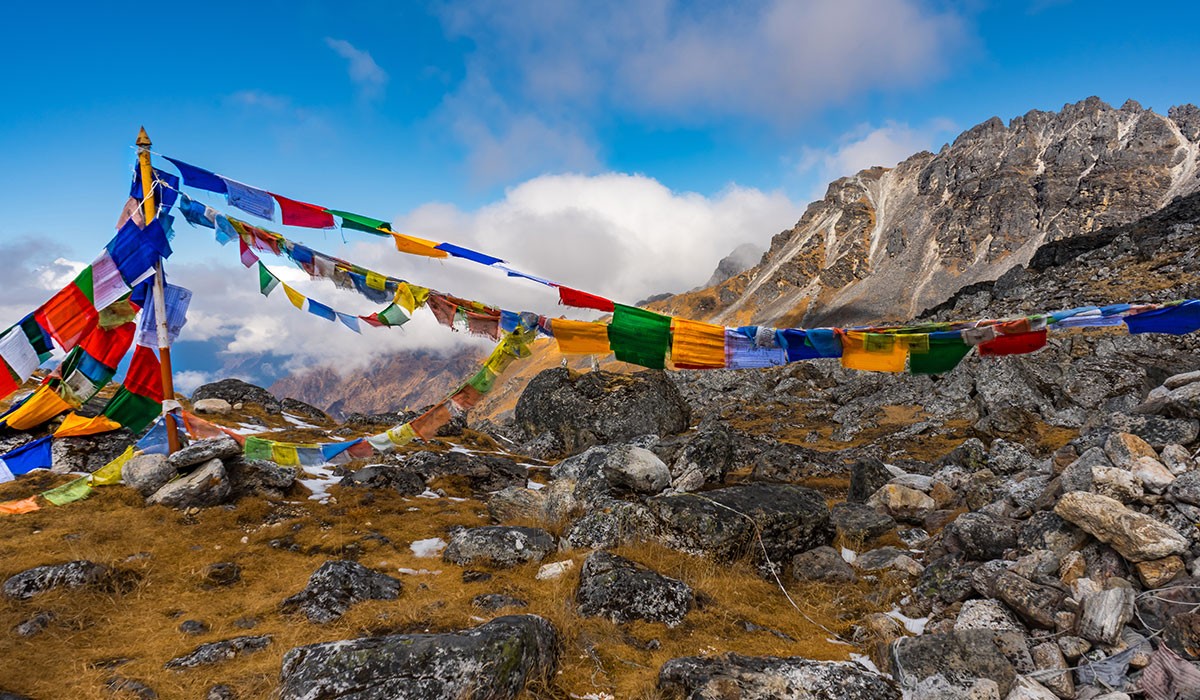
Challenges and Rewards
Although the Kanchenjunga Trek is a unique and exceptional journey in the Himalayas, it is not for the faint-hearted. This trek is longer compared to other adventures and can last around 21 to 27 days on the itinerary plans.
Similarly, the altitude gain, remoteness of the civilization and the isolation are other major hurdles of this trek. It can be hard for beginner trekkers to overcome those aspects; that’s why Kanchenjunga Trek is generally only referred to for experienced trekkers.
However, the reward that comes along with this trek significantly overpowers the mild scale difficulty factors. This far-eastern trekking route promises a sense of solitude a deeper connection with the nature and culture of the region, and the satisfaction of exploring the part of the world that is largely untouched by modernization.
Learn About:How to Prepare for Kanchenjunga Trek?
Practical Considerations
Best Time to Go
On this off-beaten path, you need to make sure to choose the right period to avoid any kind of weather-related inconveniences. As the overall journey is long, even minor factors can affect the experience in the long run.
That’s why it is important to choose the most appropriate season for the best experience. Typically, there are two major periods that you can choose from to do this trek. You should consider either the months of the spring season (March, April and May) or the autumn season (September, October and November).
During these seasons, the climatic factors are stable. Thus, you will not have to worry about dealing with additional challenges during your off-beaten endeavor. Spring is popular as the hub for admiring the natural beauty of the Himalayas at its peak.
On the other hand, autumn is more famous for sheltering outdoor explorers with pleasant weather. The trekking trails are dry and comfortable, temperatures are just right, the fall landscape is quite exhilarating and it is also the core period for major festivals in the country.
Permits and Regulations
Kanchenjunga region is one of the restricted areas in the Himalayas. During your trek, you will also cross a conservation area while following the off-beaten trail of the region. Thus, for this far eastern endeavor, you will need to get two primary permits.
- Kanchenjunga Conservation Area Entry Permit— US$ 20
- Restricted Area Permit— US$ 20 per person for the first four weeks
There are four major VDCs (Village Development Committees) that fall under the restricted areas categroy: Yamphuding, Paping, Lelep and Olangchung Gola. The restricted area permit gives you access to these regions, where you will get the chance to admire the unspoiled culture, traditions and lifestyle of the natives.
Accommodation and Food
Kanchenjunga Trek is an exploration of one of the most isolated and remote regions in the country. Due to its extreme isolation the infrastructural and technological development in this region is not as fast-paced as the mainstream regions.
However, you will still be able to enjoy a standard level of food and accommodation services. The teahouses of this off-beaten region, even if they are fewer, are fully capable of accommodating the needs of the guest exploring their region.
For accommodation, there are simple family-run establishments that offer beds and meals. Rooms are normally small, with twin beds and shared bathrooms. The Bathroom facilities are also basic and squat toilets are the norm here. As for the shower, bucket water is the most viable option; you can pay extra for hot water.
As for food, most of the menu comprises of the traditional Nepali cuisine line. Dal bhat, Dhindo Gundruk, Chapati, Tsampa, Momo, Chowmein, etc, are some popular Nepali menus. You will also be able to enjoy meal options like Soup, Spaghetti, Pasta, Noddles, Salad, Pizza, Sandwich, etc.


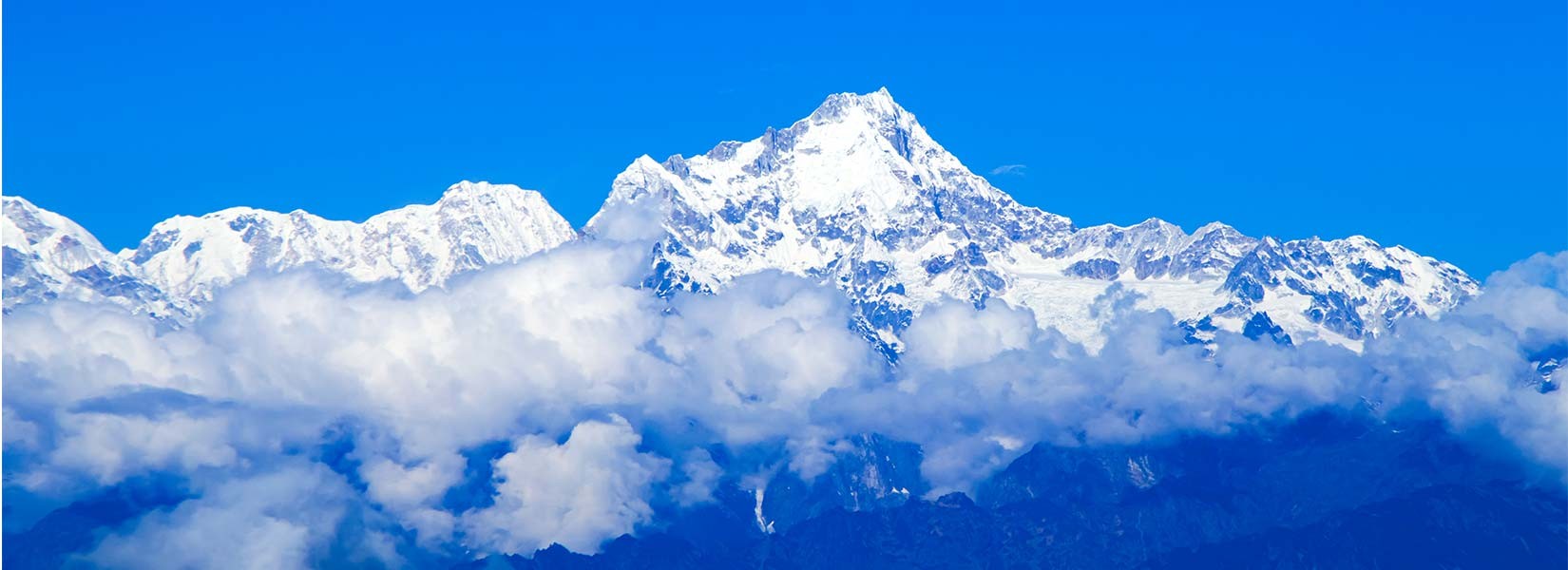
.jpg)

